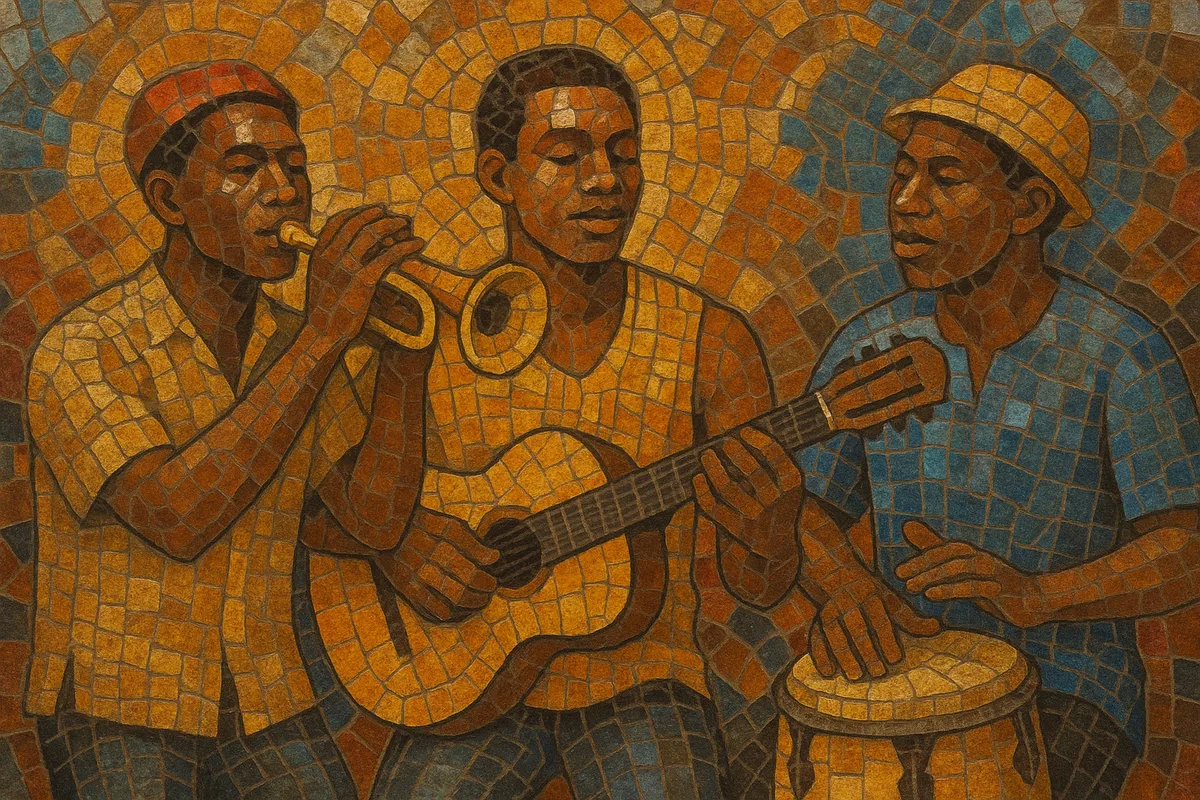Highlife is a popular music genre that originated in coastal Ghana and spread across West Africa. It blends indigenous Akan and Ga rhythms with Western brass-band harmony, Afro‑Cuban dance grooves, and jazz phrasing.
Two classic strains developed: dance‑band highlife with horn sections, lush arrangements, and ballroom tempos; and guitar‑band highlife centered on interlocking guitar riffs, percussion, and call‑and‑response vocals. In both, a buoyant 4/4 pulse, syncopated bell patterns, and diatonic I–IV–V progressions drive songs designed for social dancing and celebration.
Highlife is sung in local languages (such as Akan, Ga, Ewe, and Igbo) as well as English and pidgin, often using proverbs and storytelling. From independence‑era dance halls to modern fusions, its upbeat feel and lilting guitars remain emblematic of West African urban life.
Highlife arose in the 1920s along Ghana’s coastal cities, where sailors, military bands, and social clubs mixed local dance rhythms with British brass‑band repertoire and early jazz. The style crystallized in elite dance venues—hence the name “highlife”—while also spreading via palm‑wine guitar circles and local concert parties.
In the 1950s, large dance orchestras popularized highlife across Ghana and beyond. Horn‑rich bands such as E.T. Mensah and the Tempos, the Ramblers, and the Stargazers framed the soundtrack to the independence era with cosmopolitan swing, Afro‑Cuban patterns, and elegant ballroom arrangements.
Parallel to the dance bands, guitar‑band highlife flourished, emphasizing interlocking guitar figures, shakers, hand percussion, and call‑and‑response vocals. The style spread into Nigeria, where artists like Victor Olaiya, Rex Lawson, Osita Osadebe, and Prince Nico Mbarga localized highlife with Igbo and other regional flavors, creating enduring classics.
Economic and political pressures prompted musician migration. Ghanaian artists in Europe—especially Germany—pioneered synth‑driven "burger‑highlife," updating the groove with drum machines and keyboards while retaining highlife’s harmonic and rhythmic DNA. Meanwhile, bands blended rock, funk, and Afro‑Cuban elements, broadening the genre’s reach.
From the 1990s onward, highlife underpinned major hybrids such as hiplife in Ghana and shaped the rhythmic sensibilities of Afrobeats and wider Afropop. Contemporary artists continue to draw on its uplifting guitars, horn hooks, and proverb‑laden lyrics, keeping highlife central to West African popular music.


